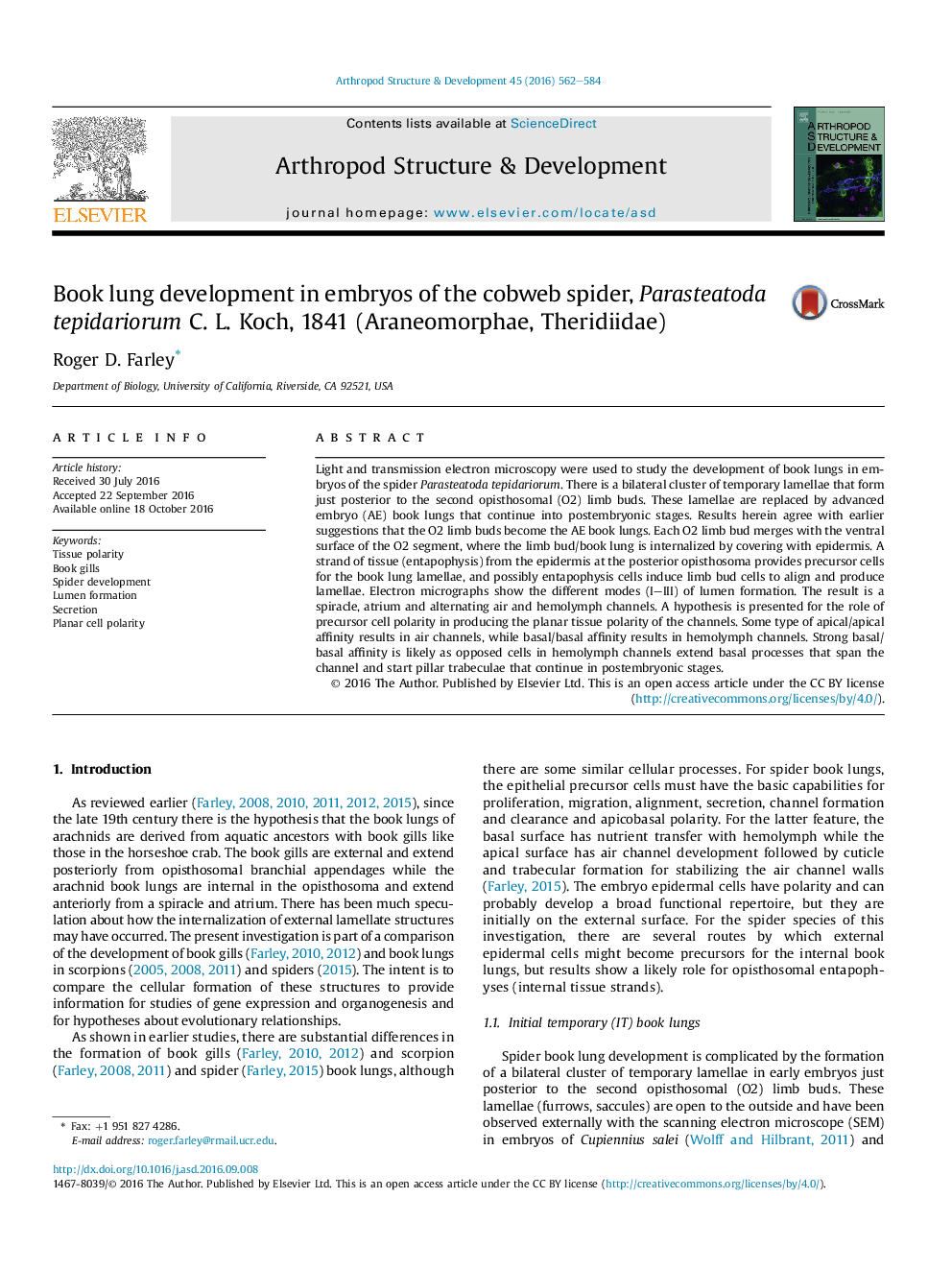| Article ID | Journal | Published Year | Pages | File Type |
|---|---|---|---|---|
| 5585003 | Arthropod Structure & Development | 2016 | 23 Pages |
Abstract
Light and transmission electron microscopy were used to study the development of book lungs in embryos of the spider Parasteatoda tepidariorum. There is a bilateral cluster of temporary lamellae that form just posterior to the second opisthosomal (O2) limb buds. These lamellae are replaced by advanced embryo (AE) book lungs that continue into postembryonic stages. Results herein agree with earlier suggestions that the O2 limb buds become the AE book lungs. Each O2 limb bud merges with the ventral surface of the O2 segment, where the limb bud/book lung is internalized by covering with epidermis. A strand of tissue (entapophysis) from the epidermis at the posterior opisthosoma provides precursor cells for the book lung lamellae, and possibly entapophysis cells induce limb bud cells to align and produce lamellae. Electron micrographs show the different modes (I-III) of lumen formation. The result is a spiracle, atrium and alternating air and hemolymph channels. A hypothesis is presented for the role of precursor cell polarity in producing the planar tissue polarity of the channels. Some type of apical/apical affinity results in air channels, while basal/basal affinity results in hemolymph channels. Strong basal/basal affinity is likely as opposed cells in hemolymph channels extend basal processes that span the channel and start pillar trabeculae that continue in postembryonic stages.
Related Topics
Life Sciences
Agricultural and Biological Sciences
Insect Science
Authors
Roger D. Farley,
